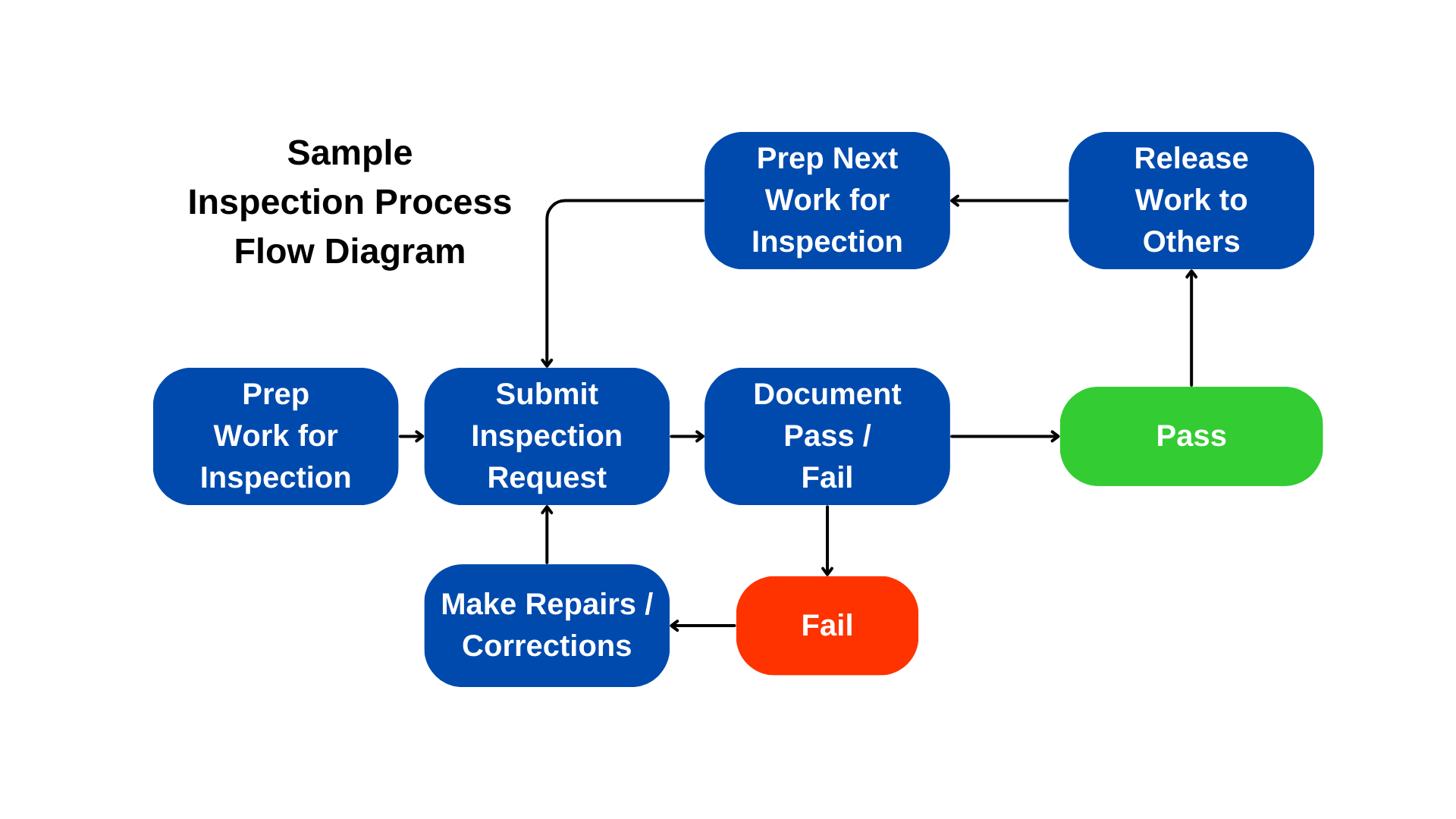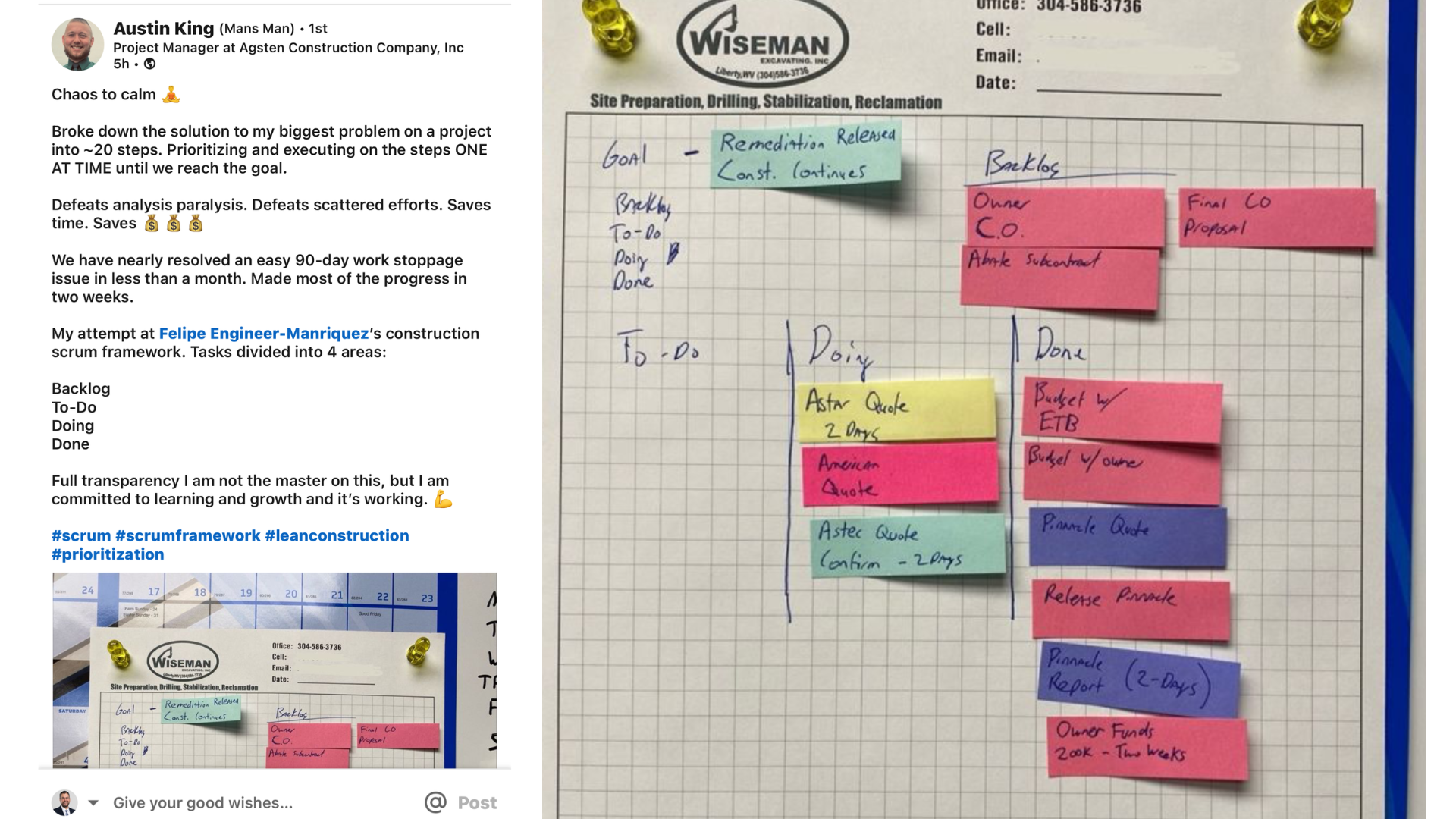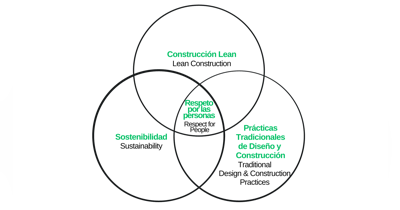In my journey as a Scrum Master and working closely with design and construction teams, I've encountered a myriad of challenges that are all too familiar in our industry. A recent query during one of my Scrum Master training sessions struck a chord with me, underscoring the complexities we face on the ground:
"We're in the thick of a sprawling construction project, with multiple design packages across a vast site. The absence of a streamlined process for tackling quality issues means we're constantly putting out fires, making it tough to measure progress. Yet, according to our schedule, we're on track. Is there a way to incorporate Scrum into our current chaos?"
This question is not unique. Many construction projects grapple with similar issues: delayed submittals, labor shortages, and a flood of RFIs that can derail even the best-planned schedules. But here's where the beauty of Scrum shines.
Issues as Backlog Items
While not conventional, transforming these challenges into backlog items on a Scrum board can provide a starting point for regaining control. Consider these common predicaments:
- "How do we tackle the inspection bottleneck?"
- "What's the best approach for leading our team to ensure we achieve Target Value Delivery?"
By placing these questions onto your product backlog, they serve as a beacon, guiding your team towards solutions. You might wonder,
"Aren't backlog items supposed to deliver tangible work increments?"
True, issues or questions alone don't culminate in a finished product. However, they're pivotal decisions awaiting the team's consensus to kickstart the delivery of substantial backlog items.
From Issues to Working Solutions
The goal is to swiftly transition from identifying issues to creating actionable user stories. These stories should not just outline problems but propose experiments to test solutions.
For instance, if deciphering an inspection process is your dilemma, why not sketch a quick process flow diagram? Engage your team in stress-testing it with hypotheticals. This collaborative effort not only validates your approach but also aligns your team with a process that aims for zero defects at the first inspection.
The Scrum Advantage in Construction
Adopting Scrum in design and construction isn't about adding more layers to an already complex process. It's about simplifying decision-making and accelerating the resolution of issues that can bog down projects. By embracing Scrum, you can transform the way your team addresses the unpredictable nature of construction work, paving the way for a more efficient, responsive project lifecycle.
P.S. Wrestling with Scrum implementation on your project? Join our next workshop, available both virtually and as self-paced training, to navigate your Scrum journey with confidence.
🛠️🔄 How has Scrum made a difference in your construction projects? Have you seen improvements in handling schedule constraints or quality issues? Here's a shared experience from LinkedIn!
Chaos to Calm: The Power of Scrum in Resolving Work Stoppages
In the dynamic world of project management, the implementation of Scrum methodologies stands out as a beacon of efficiency and cost-effectiveness. Austin's recent experience exemplifies this transformative power, where a seemingly insurmountable 90-day work stoppage was swiftly addressed in just 28 days.
That's approximately 70% faster than initially anticipated!
Breaking down the numbers reveals the true magnitude of this achievement. With a total duration of 90 days for the work stoppage, Austin's team managed to save an impressive 62 days by adopting Scrum. This drastic reduction not only speaks volumes about the effectiveness of Scrum but also showcases its ability to turn chaos into calm with unparalleled speed and precision.
Beyond the sheer time savings, this team reaped substantial cost benefits by minimizing overhead, salaries, and potential revenue losses during the downtime. This success story underscores the dual impact of Scrum, enhancing adaptability and delivering tangible cost savings that directly contribute to the bottom line. In essence, Austin's journey serves as a compelling testament to using Scrum for a strategic approach that empowers teams to navigate challenges efficiently, reduce costs, and achieve remarkable results in record time. This is easier, better, and faster construction.













